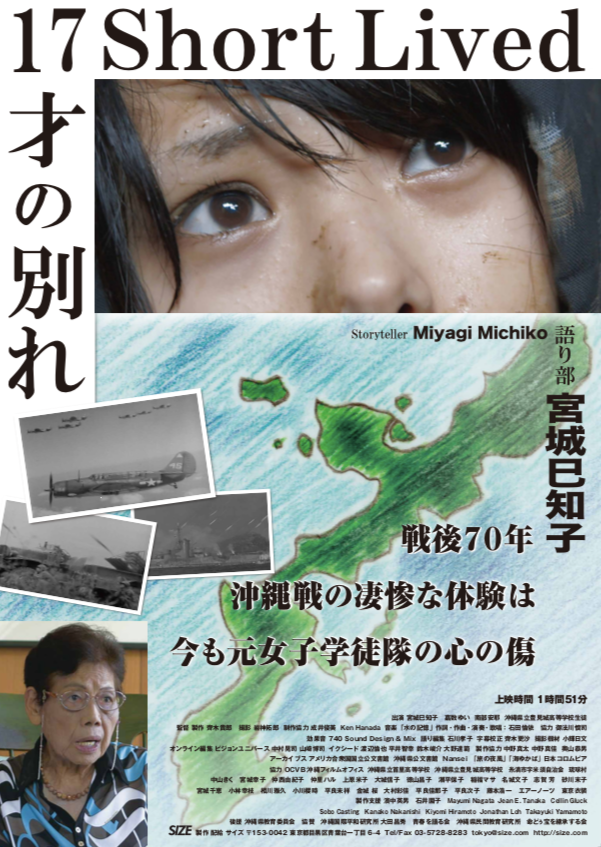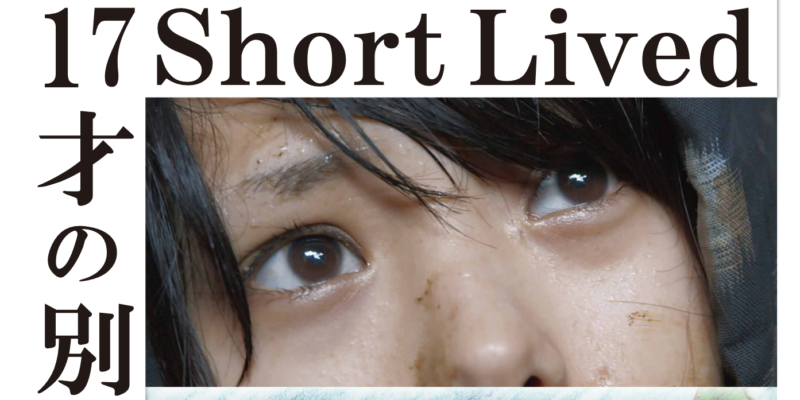Breath taking!
Psychoanalysis and cinema are of mutual interest, and Jacques Lacan’s standpoint illuminates this aspect of contemporary art. What, then, brings us to cinema?
Cinema introduces an experience with a new form of gaze and vision – a fantasy projection screen. The cinematographic art is “a very special modality of the visible”, as Jacques-Alain Miller said.[1]
Statement
Saiki Takao is a Japanese producer[2] and currently lives in Japan. He worked as a line producer on TV commercials in Los Angeles for 13 years. He established his own production service company – Size, based in Los Angeles and Tokyo, in 1980.
He produced free newspapers – Trans New Firm in 1983, Video Voice in 1985 – for the Japanese advertising industry.
“Tobira No Muko” (Left Handed) (2008)[3] is the first feature film he has produced.
“Jyunanasai no Wakare” (17 Short Lived) is the first documentary film he has directed and produced.
On 1 May 2019, the Nissan Institute of Japanese Studies at the University of Oxford[4] invited Saiki Takao to a special showing of this film.[5]
Behind the Screen
17 Short Lived (2015) is a Japanese film with various materials (documentary) and fiction. The alternation between speech and image introduces the main figure: Michiko Miyagi, the storyteller. The filmmaker’s desire is expressed by the image of a collective tragedy: World War Two, the elaboration of a destiny and a personal mourning.[6]
From a more psychoanalytic point of view, war is unleashed by the power of signifier and discourse. Following Lacan, the subject gets his subjective coordinates from language and speech; he is the Other’s effect of the symbolic. In this respect, the film questions the true relationship of the subject to discourse and highlights the link between war and the surge of the unpredictable real that escapes the subject’s control.
A World of Images
The filmmaker sets the staging as an eye-opener, which is looking at the viewer who is simultaneously being looked at. If the gaze is born from the light, the spectator doesn’t notice its presence. The object a arises in the field of the visible. It’s a mode of jouissance extracted from the perceptive field.[7] In this context, the artist’s artistry reveals the hidden object.
The void is introduced by “the scenes with schoolgirls linked to the emptiness of ground, corridor and room”, says the filmmaker.[8] If war makes discourse, it promotes a mode of jouissance, which is associated with systematic destruction. The imaginary binds the symbolic by the alternation of the win/lose and the real of the object escapes any value; it is put at the service of the real itself. In war, the symbolic brings about an essential transformation under the influence of real. Thus, the symbolic no longer governs the real. The power of language is put at the service of another jouissance that is not phallic. As such, the war produces with the symbolic a hole in the real as a void.[9]
The Effects
Nowadays, the idea of ‘civilisation and its discontents’ developed by Freud[10] is combined with the advance of scientific and technical knowledge, which allows the mastering of the forces of nature and also total destruction. The desire for war sustained by the death drive erects conflicts as a modality of the master’s discourse. The army, the institutions and obedience imply the social bond.
In this respect, the film questions the notions of docility and indocility. The testimony of the central character sheds light on the truth of docility to the master’s discourse. It brings to light the fact that the social link is made of the three psychoanalytic registers; the symbolic, the imaginary and the real.
In other words, war destroys the existing social bond and promotes new forms of discourse. The act of defence of the subject facing the real without law and out of sense highlights the subject’s act. “She often said that she was a coward but I think”, said Saiki Takao, “she didn’t lose herself when she didn’t put the syringe with poison to the heavily wounded soldiers. In fact, she couldn’t believe in her country of Japan anymore”. He adds: “she couldn’t talk about the incident about the poison syringe for forty years.”
The observed silence as a paradoxical guarantor of the speech act is presented like an invocatory drive addressed to the Other. The series of incidents as a trauma is questioning here the time category as the parlêtre’s exile. It reveals the hole, where the subject had no words to say the unspeakable in the Other.
The violence of the trauma of separation returns as a mode of jouissance in words, when the link of the ideal conveys the superego. The silent subject became a storyteller. “She believed that it was her duty to educate the young people,” adds the filmmaker.
Conclusion
Saiki Takao was born just after World War Two when the symbolic markers were flickering and his artistry operates by treating the real with the symbolic.
Despite the passing of time, the filmmaker’s know-how shows that there is always something of the war that insists: the fear of oblivion. In this context, the artist grasps traces of culture and uses them to make a new work of art.

[1] Jacques-Alain Miller, “The Sovereign Image” in The Lacanian Review, Hurly-Burly, No. 5, 2018.
[3] About the social withdrawal syndrome in Japan.
[4] Nissan Institute of Japanese Studies, Oxford University, St Antony’s College, UK.
[5] Synopsis: During World War Two in Okinawa, Japan, 555 high school girls were drafted to become nurses. They were given no choice and no information. 194 of them died. http://size.com/17/story.html
[6] Personal communication.
[7] Jacques Lacan, lecture of 4 March 1964, “Line and light”, Seminar XI, The Four Fundamental Concepts of Psychoanalysis, Penguin, 1979, p. 89 [translation modified].
[8] Personal communication.
[9] Marie-Hélène Brousse, (2015), Lacan: La guerre, un mode de jouissance, La psychanalyse à l’épreuve de la guerre, ed. Berg International, p 157.
[10] Sigmund Freud, “Civilisation and its Discontents” (1929), SE21.

